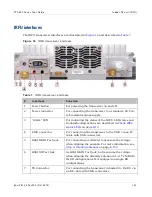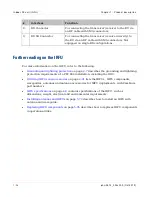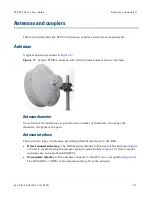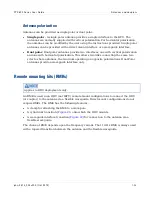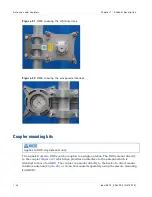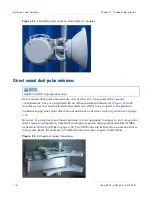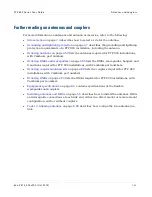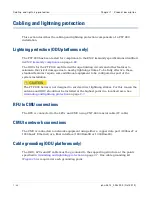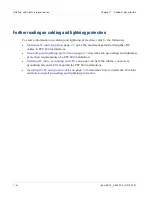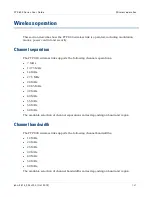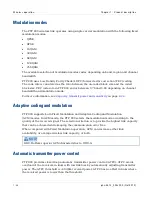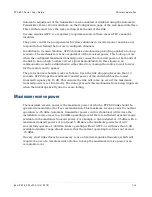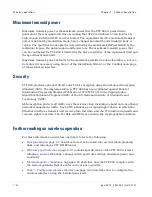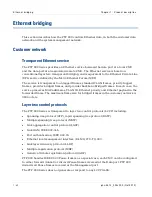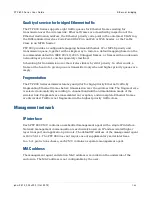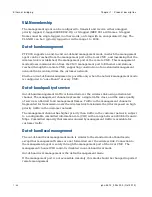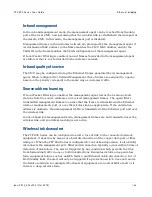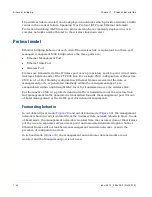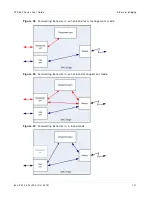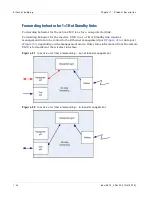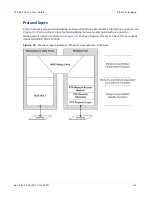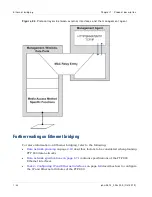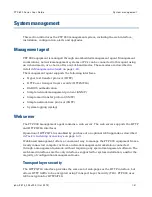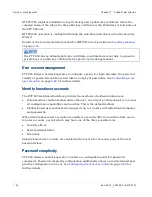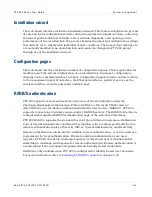
PTP 800 Series User Guide
Wireless operat ion
phn- 2513_004v000 ( Oct 2012)
1- 39
Automatic adjustment of the transmitter can be enabled or disabled using the Automatic
Transmitter Power Control attribute on the Configuration page of the web-based interface.
This attribute must have the same setting at both ends of the link.
In some regions ATPC is a regulatory requirement and in these cases ATPC cannot be
disabled.
The power control loop compensates for slow variations in received power and does not
respond to fast fading that occurs in multipath channels.
In addition to its main function, ATPC includes a mechanism protecting against a lock up
scenario. The mechanism is active regardless of the received power. This lock up occurs
when the configured maximum transmit power causes the received power at both ends of
the link to be too high to allow correct signal demodulation. In this situation, no
communication can be established in either direction, causing the radios to wait forever
for the remote end to appear.
The protection mechanism works as follows. Upon the link dropping for more than 10
seconds, ATPC drops the maximum transmit power of the end which has the lowest
transmit frequency by 15 dB. This ensures the link will come up even if the maximum
transmit power is set incorrectly. The delay prevents this mechanism from being triggered
when the link drops briefly due to severe fading.
Maximum receive power
The maximum receive power is the maximum power at which a PTP 800 link should be
operated to maintain error free communication. This maximum receive power for normal
operation is -35 dBm. Automatic transmitter power control, if enabled, will reduce the
installation receive level to a -40 dBm operating level if there is sufficient dynamic range
available in the maximum transmit power. For example, a link installed at -35 dBm with a
maximum transmit power set to at least 5 dB above the minimum power level will
successfully operate at -40 dBm. Links operating without ATPC, or with less than 5 dB
available dynamic range should ensure that the normal operating level does not exceed
-35 dBm.
On very short links it may be necessary to use a fixed waveguide attenuator, which will
require the use of a remote mount antenna, to keep the maximum receive power at an
acceptable level.
Содержание PTP 800 Series
Страница 1: ...Cambium PTP 800 Series User Guide System Release 800 05 02 ...
Страница 40: ...Licensing requirements About This User Guide 10 phn 2513_004v000 Oct 2012 ...
Страница 232: ...Limit of liability Chapter 3 Legal information 3 22 phn 2513_004v000 Oct 2012 ...
Страница 322: ...Radiation hazard assessm ent Chapter 4 Reference information 4 90 phn 2513_004v000 Oct 2012 ...
Страница 418: ...Replacing IRFU components Chapter 5 Installation 5 96 phn 2513_004v000 Oct 2012 Figure 1 1 0 IRFU components example ...
Страница 428: ...Replacing IRFU components Chapter 5 Installation 5 106 phn 2513_004v000 Oct 2012 ...
Страница 552: ...Configuring for FIPS 140 2 applications Chapter 6 Configuration and alignment 6 124 phn 2513_004v000 Oct 2012 ...
Страница 630: ...Using recovery mode Chapter 7 Operation 7 78 phn 2513_004v000 Oct 2012 ...
Страница 648: ...Glossary I V phn 2513_004v000 Oct 2012 ...

